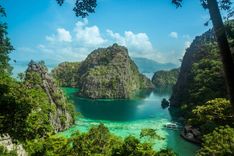How to avoid mosquito-borne illnesses
Mosquito bites are part of tropical travel, but that doesn’t mean you should let your guard down. Dengue is widespread, and malaria is a risk in some parts of the country. Pack smart and plan ahead.
Malaria in the Philippines
The risk of malaria is low in most tourist areas – Manila, Cebu, Boracay, and Bohol are malaria-free. But some rural and forested regions, especially in Palawan and Mindanao, still report occasional cases.
Prevention tips:
- Sleep under a mosquito net if you're in high-risk rural areas.
- Cover up at dawn and dusk – long sleeves and trousers help.
- Talk to your doctor about anti-malarials if you're visiting remote or jungle areas.
Dengue fever and Zika
Dengue is more common than malaria and spreads fast during the rainy season (June to November). Zika has been reported but is less common. Both are spread by daytime-biting mosquitoes.
Tips to reduce the risk:
- Use repellent during the day, not just at night.
- Wear light-colored, loose-fitting clothing.
- Stay in accommodations with screens or air-con.
If you feel sick: High fever, joint pain, and a rash could mean dengue. Avoid ibuprofen and aspirin – they can increase bleeding. Stick to paracetamol and see a doctor.
Staying healthy in the Philippines
If you’re already guarding against mosquito bites, you’ve tackled one of the biggest risks. But there are a few more Philippines travel health tips to keep in mind as you explore the islands.
Rabies awareness
Stray dogs are common across the Philippines – especially in rural towns and fishing villages. Monkeys and even cats can also carry rabies. If you get bitten or scratched, act fast.
- Wash the wound immediately with soap and clean water.
- Disinfect it with iodine or alcohol.
- Head to the nearest medical clinic – even if you’ve had the rabies vaccine, booster shots are still needed.
If you’re planning an extended stay or heading to more remote regions, getting vaccinated against rabies before you travel is a smart move.
Food and water safety
Filipino food is tasty, diverse, and often served at sizzling roadside carinderias. But food hygiene isn’t always top-notch, especially in rural areas.
- Eat at busy stalls where food is made to order.
- Avoid raw shellfish and unpeeled fruits.
- Tap water isn’t safe to drink – even in cities. Use bottled or filtered water for drinking and brushing your teeth.
If you’ve got a sensitive stomach, bring probiotics or activated charcoal to help avoid digestive trouble.
Traveler’s tummy
If a dodgy meal strikes, your top priority is staying hydrated.
- Use oral rehydration salts to replace lost fluids.
- Stick to the BRAT diet – bananas, rice, applesauce, toast.
- Avoid anti-diarrheal meds unless you're traveling or far from medical help – your body needs to clear out the infection naturally.
Dealing with pollution and heat
Air pollution in Metro Manila and other big cities can be tough, especially during the dry season (December to May). If you have asthma or other respiratory issues, pack an N95 mask.
And don’t underestimate the heat – the Philippine sun is relentless.
- Drink more water than you think you need.
- Take breaks in the shade or air-con spots.
- Avoid hiking or intense activities between 12 and 3 pm when the heat peaks.




